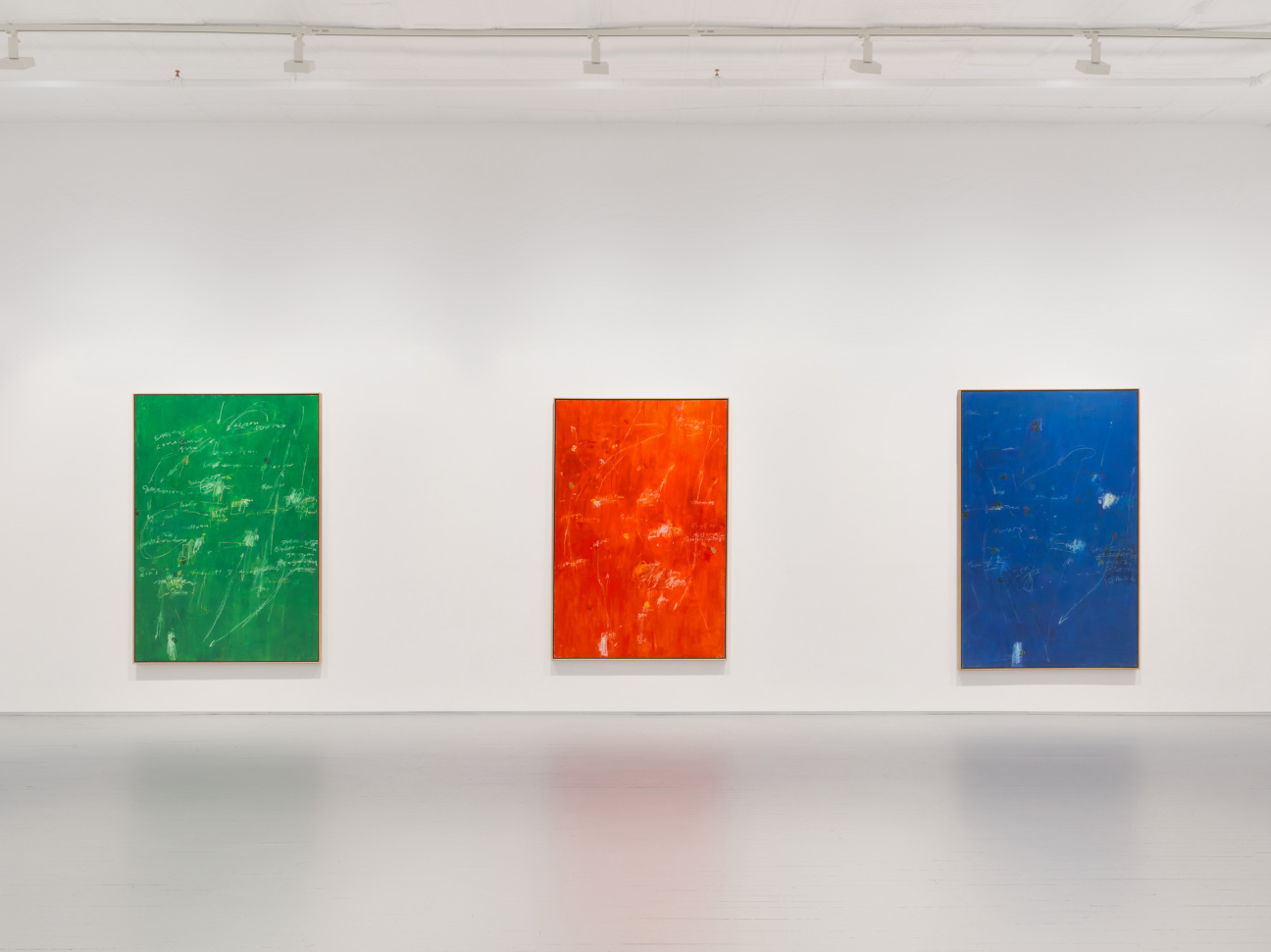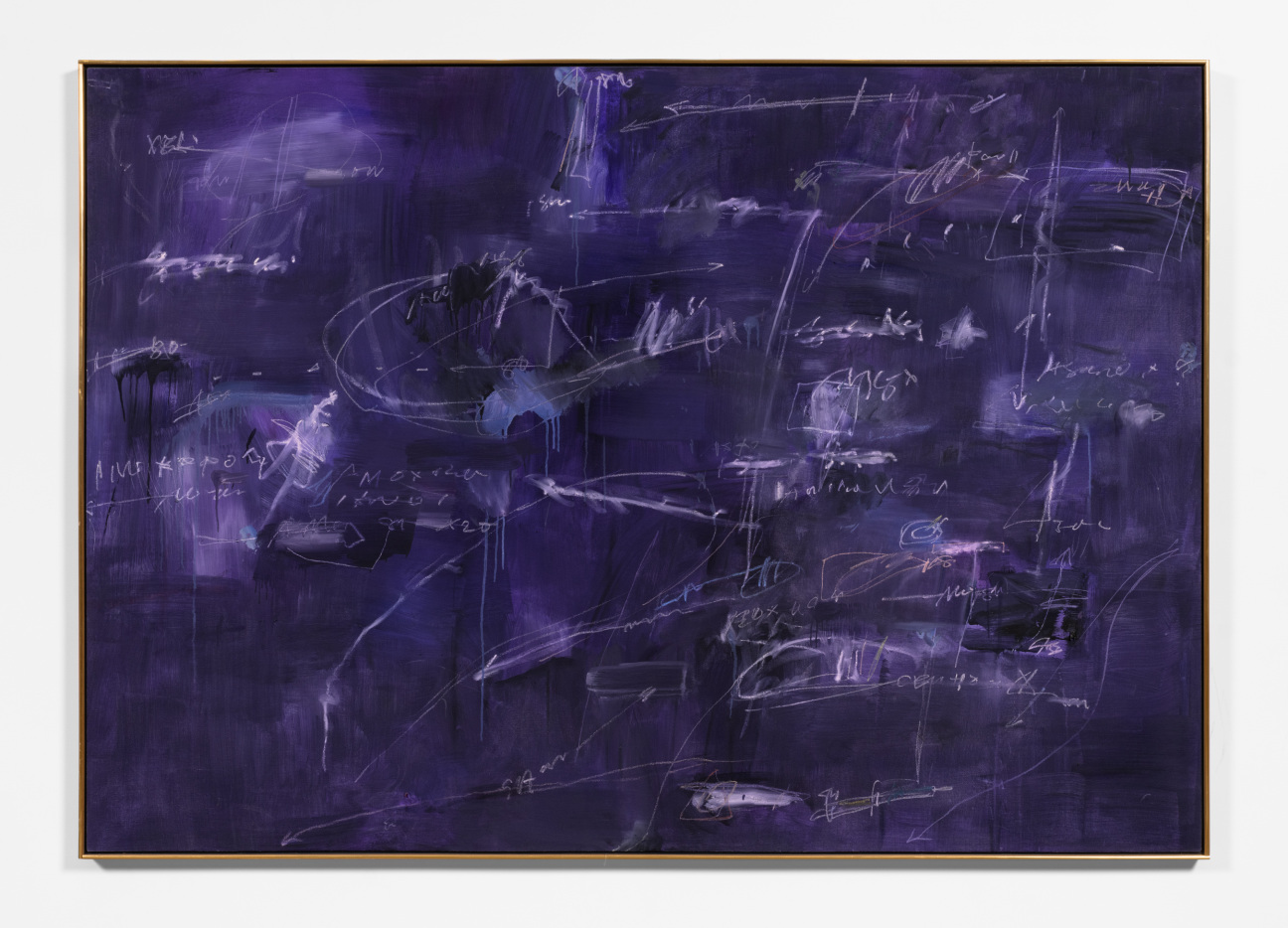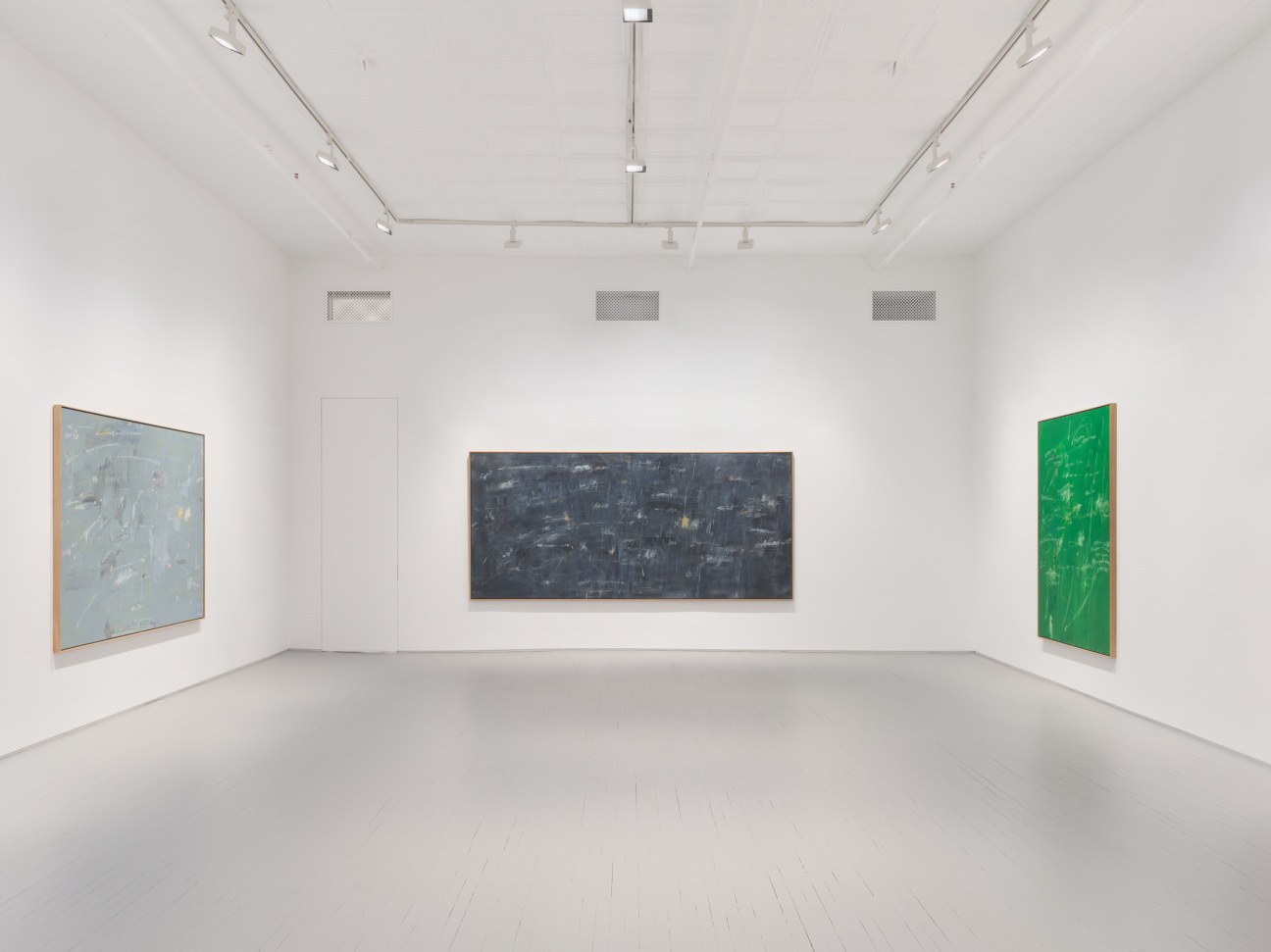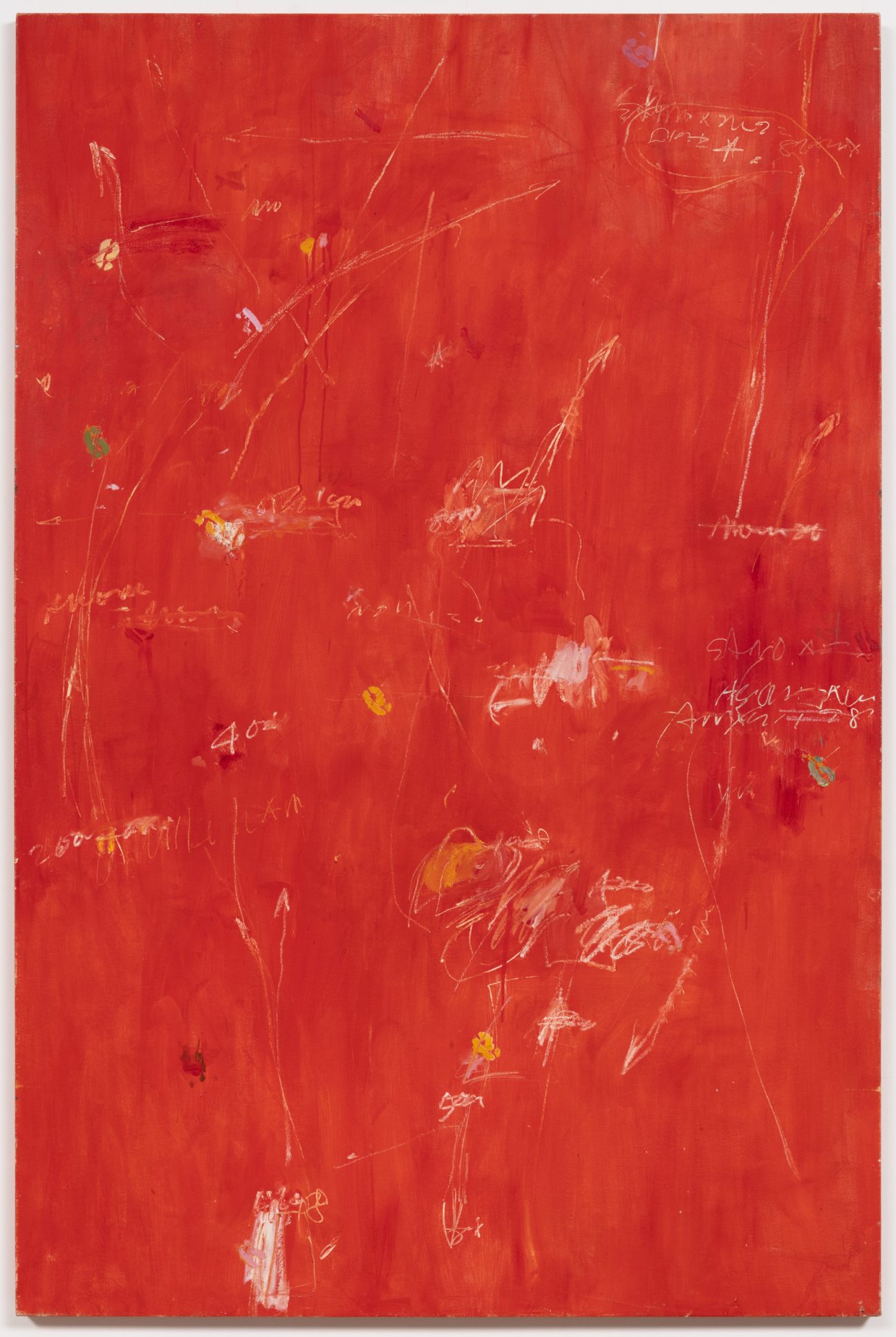
It’s not often that gallerists are able to establish themselves in the neighborhood that raised them. Before moving to the Bronx as a teen, James Fuentes’s family lived a stone’s throw from his eponymous Delancey Street gallery, which has brought artists like Didier William, Lonnie Holley, and Juanita McNeely to prominence over the past seventeen years.
Those deep ties to the area—he and his wife, Branwen Jones, also lived in the apartment above the Lower East Side gallery—are perhaps what made the announcement a little over a year ago that he would relocate to Tribeca so notable. Since then, the dealer has entrusted the renovation of his new address, 52 White Street, to Billy Cotton, the interior designer behind the homes of artists like Cindy Sherman and Lisa Yuskavage. He also opened an outpost in Los Angeles’s Melrose Hill neighborhood, which has already staged 5 shows. Tonight, he’s ready to inaugurate his Tribeca digs with a Christopher Y. Lew-curated exhibition of Kikuo Saito’s early work—a deconstruction and exploration of “monochrome.”
Below, Fuentes tells CULTURED about 52 White’s experimental former tenants, embracing the locations “good bones,” and treating the art world like a small town.

CULTURED: Your eponymous gallery is officially leaving the LES—the neighborhood it’s called home since 2007 and where you in part grew up—for Tribeca this week. How have you said your goodbyes to the area that’s witnessed such crucial moments in James Fuentes history?
James Fuentes: I definitely am not going to say goodbye! I’m thinking of someone very special to pass the space along to after I leave. I also want to continue staying close to important projects like the Henry Street Settlement; there’s still so much work to do in the Lower East Side. I also still have family that lives in the neighborhood.
CULTURED: What are you looking forward to leaving behind with this move? To welcoming in?
Fuentes: I’m happy for the gallery to leave behind a generous and lasting legacy. I'm looking forward to welcoming more foot traffic in our new neighborhood.
CULTURED: You also opened an LA outpost last May. How will you continue to weave a dialogue between the two coasts in the Tribeca space?
Fuentes: The way I see it, we’ve been working in a monophonic fashion in New York. Now, with LA the gallery, we can truly be in stereo.

CULTURED: At 52 White, you’ll be sharing a block with Bortolami, Mendes Wood DM, 125 Newbury, and Deli Gallery, among others. How do you see the James Fuentes ethos/program situating itself among this dense offering of galleries?
Fuentes: Thankfully, we all hit different notes. These are vastly different programs, and I admire every one of them, which feels like a real gift.
CULTURED: 2024 marks the 17th year of the James Fuentes gallery journey. What’s a facet of this job that still delights or surprises you?
Fuentes: I think the fact that it’s ever-changing is the thing that appeals to me the most. You can never really sit very comfortably. This world is incredibly tuned to the time that we’re living in.
CULTURED: You burst onto the gallery circuit under the wing of stalwarts like Jeffrey Deitch and Gavin Brown in the early aughts. The New York art landscape has changed quite a bit since then. How did those years shape your attitude as a dealer and what you still bring to the table?
Fuentes: I started my career when the art world still felt like a small town. And I want to continue to operate in this field as if it’s a small town. I believe this is the best way to function in a large city, otherwise you can just get consumed by the chaos.

CULTURED: The Tribeca space was designed by art world darling Billy Cotton. What will the new floor plan/ceiling height/composition bring to the way work is exhibited?
Fuentes: It is a column free exhibition space in a cast-iron building. The layout of the room is one that envelops the viewer in the exhibition. My confidence in Billy was that he would embrace the best aspects of the space’s inherent attributes—its “good bones”—and the end result certainly does that.
CULTURED: Any hidden secrets about the Tribeca space’s design/history you cherish?
Fuentes: For over a decade, the space was home to the Collective for Living Cinema in the ‘70s, which was a very important venue for experimental film.

CULTURED: The inaugural show features eight canvases by the late Japanese artist Kikuo Saito, whose art studio was located steps away from the new gallery in the ‘90s. Aside from the geographical coincidence, why did this feel like the moment to exhibit Saito’s work?
Fuentes: Saito brings a rare combination of influences. The reverberations of Gutai painting and performance from Tokyo, where he’s from, meets with his involvement in New York color field painting as well as his background in theater. The work is truly dynamic in its ability to harness the performative qualities of both language and abstraction.
CULTURED: The exhibition is curated by Christopher Y. Lew. What lens did he bring to Saito’s oeuvre, and what did your conversations around the show look like?
Fuentes: Working with Christopher Y. Lew has been really rewarding in affirming Saito's renewed legacy. His history as a museum curator (at the Whitney Museum and MoMA PS1) in championing so many young, current, and forward-thinking artists like Salman Toor, Lucy Dodd, and Josh Kline, has informed a perspective on Saito that was overdue. And it is confirmation that it is possible for an artist to chart new territory even after they are gone.
"Color Codes" by Kikuo Saito is on view at James Fuentes Tribeca through April 20.










 in your life?
in your life?

